Animal Pods
The work presented here is part of a larger project called ‘the initiative’, which incorporates research, documentation and exploration of design and art through the lives of street animals using various mediums like studies, mappings, photo graphics, videography, designs and illustrative documentation. The nature of the remaining of this work is confidential.
Project Lead Faizan Khatri, Renders by Advaita Kelkar
Simulations
Scale models are the first step towards actualizing design, they help understand proportions and provide an early stage in the process to easily make design changes. The models below have been made using various processes, primarily 3D printed bioplastics (plastic-like materials made using fermented plant starch).
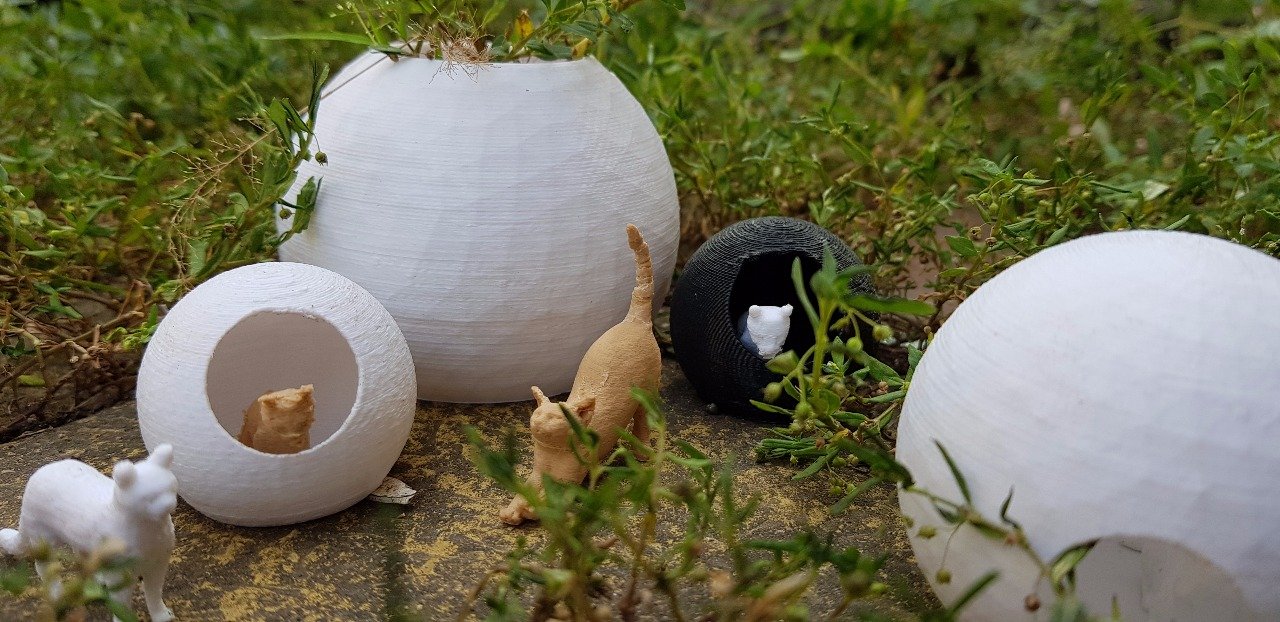






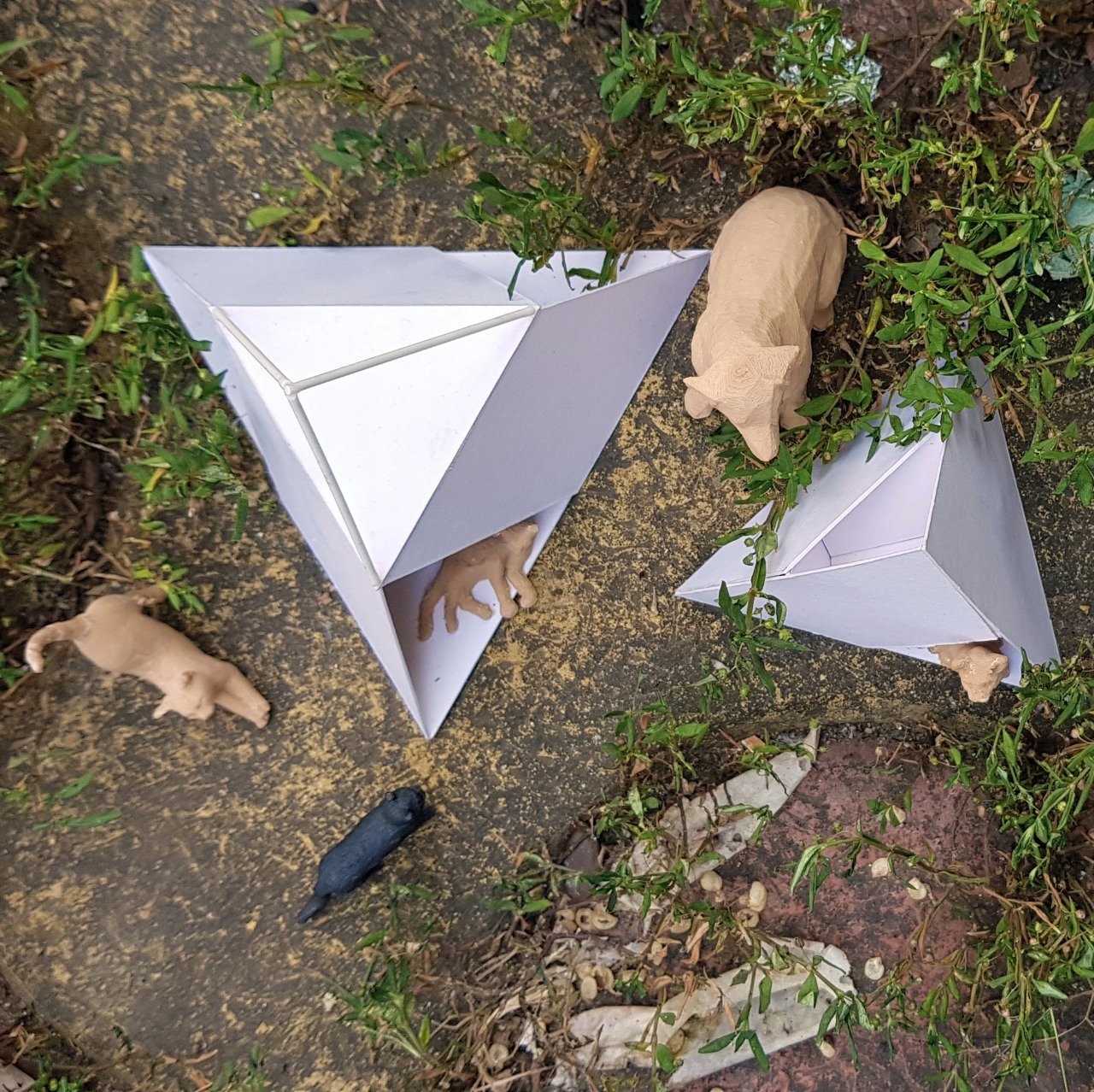
Prototyping
Prototyping is the final step before production, while this stage usually helps understand the scale and volume of the designs at life-size, it, more importantly, allows us to test whether the designs make animals curious enough to proceed to interact with them. This aids us to make more informed choices about materials and manufacturing methods. The following designs were prototyped using corrugated sheets made of recycled paper, and waste concrete at construction sites.

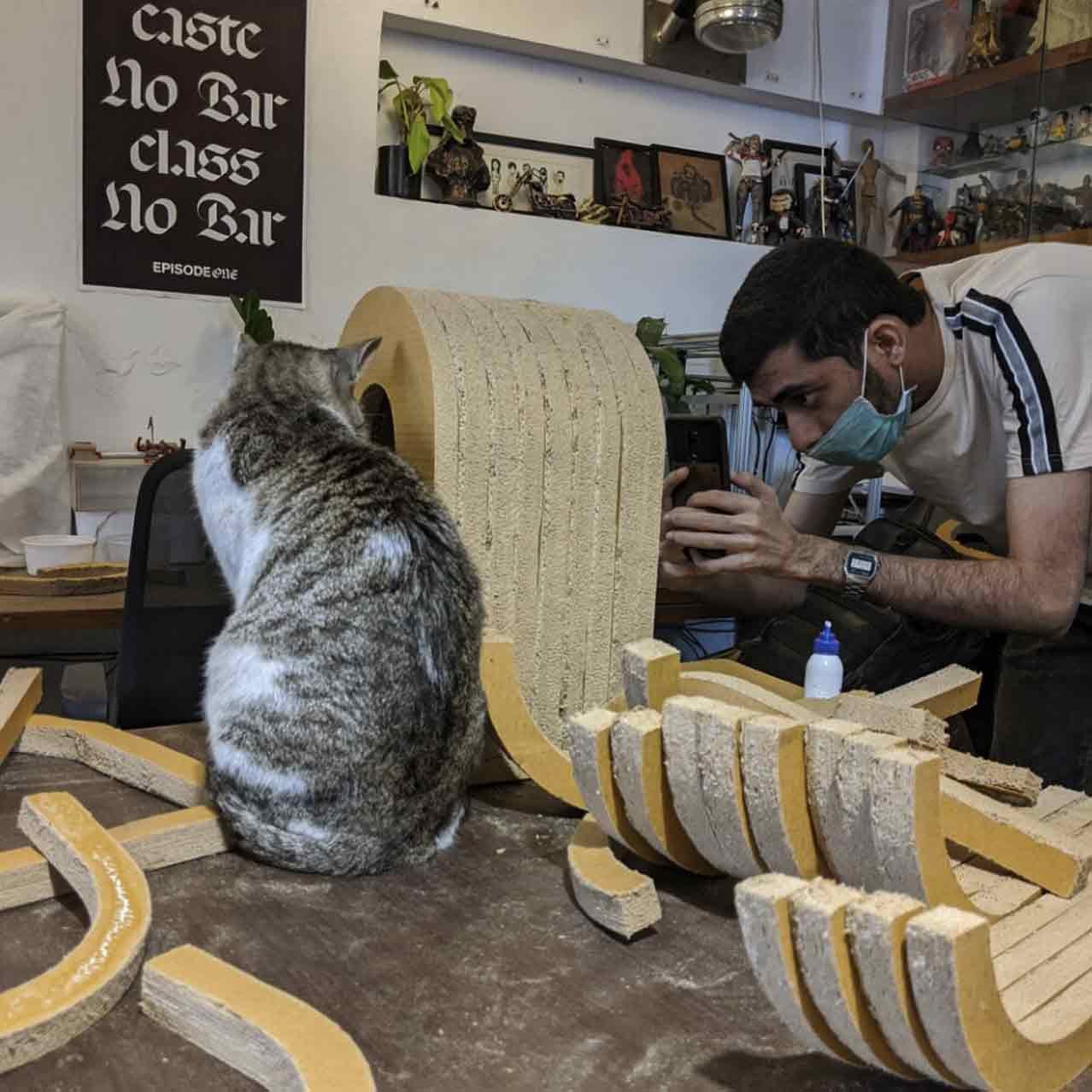

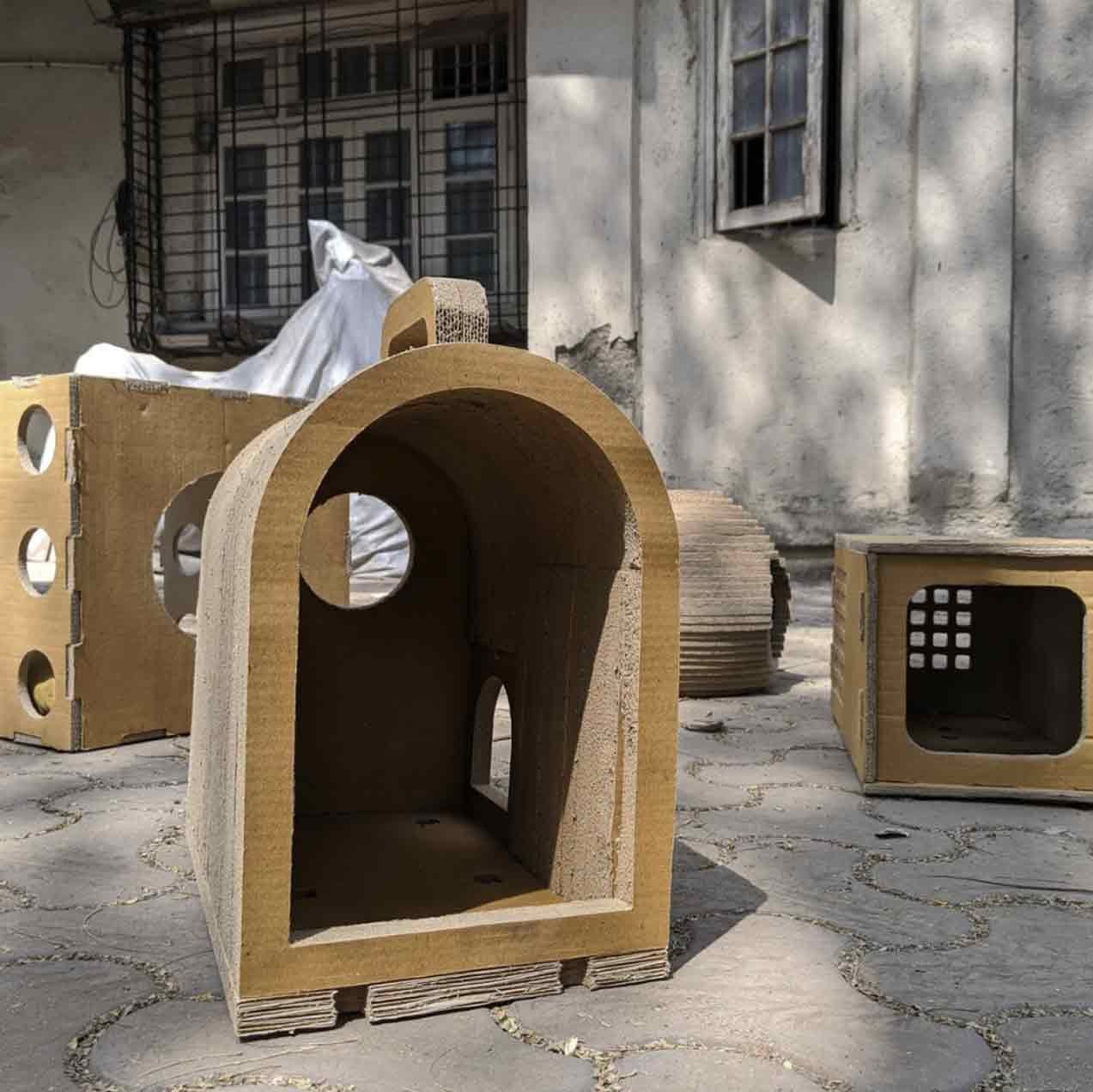


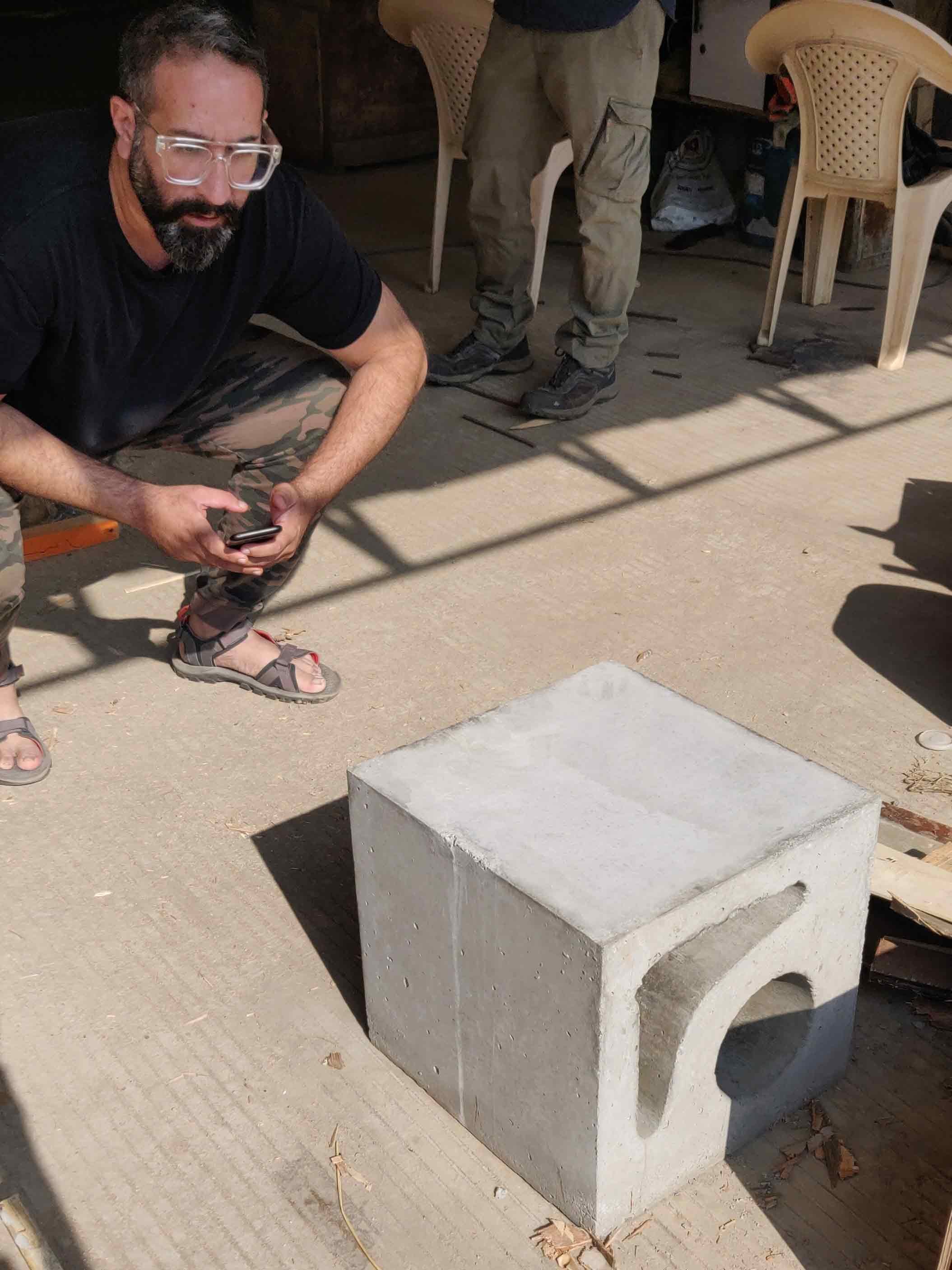

Designs
Cues from the prototyping process were used to further design more pods that utilize materials that serve their individual functions and contexts. While some pods were also designed the other way around where the design revolves around properties of particular materials. These include pods that serve animals and ones that serve both animals and humans.











